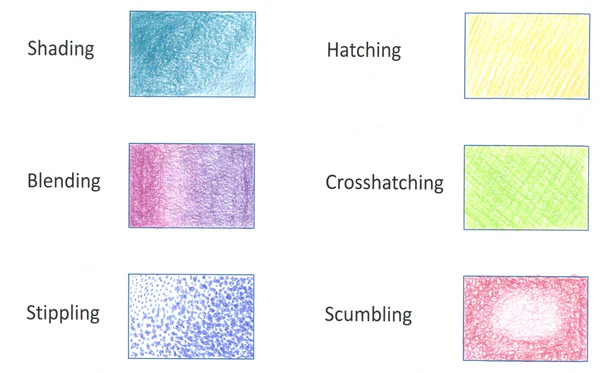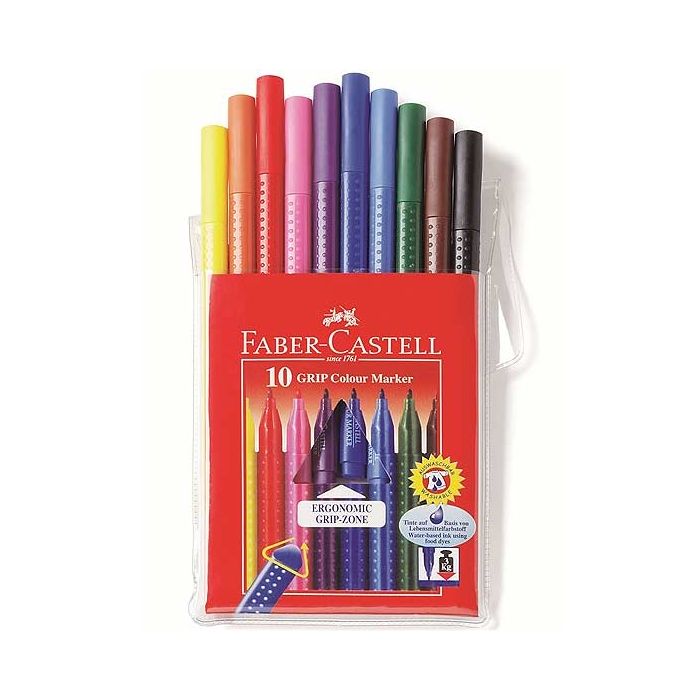First Off, What Should I Use to Color With?
As you will undoubtedly notice, there are many different coloring instruments on the market today. In this section, we will walk some of the most popular – markers, colored pencils and gel pens.
Markers
Markers are also available in two forms – water or alcohol based, and they vary in quality from student to artist grade. Water based markers are often used in schools or for basic coloring. The dye is not permanent and can fade over time. They take longer to dry and layering colors can often degrade the page. Furthermore, they tend to streak and although they can be blended, it is extremely hard to do unless you are an experienced artist. Art stores do have higher quality water based markers, but it is hard to get around the fact that the water base of the marker can degrade the pages of even the highest quality coloring book.
Alcohol based markers are fast drying and tend to be permanent, although most can be blended with a special blending marker or a Q-Tip and rubbing alcohol. One way to blend alcohol based markers is to saturate the paper with the blending marker before saturating the area with color. Once the color is applied, use the blending marker to blend out the streaks. It is important to have a range of both wide and fine tipped markers as some of the coloring spaces are quite large, while others are extremely intricate and require a fine point. Be sure to put a piece of paper in between the pages as they tend to bleed onto the next page. It is important to note that while markers offer vivid, bold colors, mistakes are much more visible so you need to have steady hands. In addition, alcohol based markers tend to be more expensive than water based markers and often need to be purchased in art stores.
Colored Pencils
Colored pencils are the best alternative for adults who are just beginning to color as mistakes are less visible. Similar to markers, there is a wide range of colored pencils on the market, ranging from student to artist grade quality. Purchase the highest quality of pencils you can afford as the pigments tend to be richer and they offer the most flexibility in terms of shading and blending.
Gel Pens
Gel pens are extremely versatile and come in a variety of colors including neon and glitter. They glide over the paper smoothly and are great for detail work or layered over marker. They can skip so be sure to go slowly and since they don’t dry instantly, be careful not to smear your work.
Tell Me About the Different Ways to Color:
There are so many strokes you can use to color in a picture. We recommend you experiment with all of these types of strokes as they each produce a slightly different look and feel.

Shading: Using a colored pencil, put down a light coating of color and then begin to carefully build up the color to provide darker and lighter areas. Be sure not to color too dark in the beginning as it limits your ability to shade properly.
Blending Colors: Like you did with the shading, start with a light coating and then build up the intensity and layering of the colors. The most basic way to blend colors is to gently bring the colors together with a stippling or scumbling stroke. You can also blend using the hatching and cross-hatching strokes. If you are using the high quality wax pencils, you can also use a blender pencil to help smooth out the transition from one color to the other.
Stippling: This involves placing tiny dots on the paper. The dots can be far apart, creating a lighter look, while numerous dots in a small place will create a darker, more solid look. You can also alter the look of the stippling by using a combination of dots from both a sharp and dull pencil. Finally, you can stipple an area with several colors to create a blended look. For example, stippling an area with red and blue dots will appear purple.
Hatching: This method involves drawing a series of parallel lines going in one direction, which can be long, short, or a combination of both. With each mark, the pencil is lifted from the paper and then placed down again to create the next line. As with stippling, the lines can be close together or far apart to vary the intensity of the color.
Crosshatching: Similar to hatching, this stroke also involves a series of parallel lines going in one direction, but then you add a second layer of strokes on top of the first, this time going in the opposite direction. This is a great way to add depth and texture to an image.
Scumbling: This technique involves moving your pencil around and around in a circular motion to without lifting the pencil off the page. It is a great way to fill in areas with lots of color. The circles can be spread loosely apart to convey an “uncontrolled” look or they can be placed close together, which tends to fill in all of the white space on an image. You can also use varying levels of pressure to create light and dark spaces as well. We all colored this way when we were children, without realizing that there was an actual term for what we were doing.
How Can I Pick the Right Colors to Use?
Well, there are no wrong or right colors. Different color combinations appeal to different people. And know this…the colors you select CAN affect your mood. Here’s a guide to how you can use colors to rev up or calm down—or combine them for a total mood makeover.
 |
Cool Colors like blue, green and purple have a calming effect. Use them to literally chill out.
Warm Colors like red, orange and yellow are pepper-uppers. Try them when you want to brighten a bad mood. Bright Colors are energizing, so turn to them when you want a little inner lift. Dark Colors carry a relaxing energy and can be used to ratchet down an overactive mind. Pastels and light tints communicate softness and help soothe the soul.
|
Now that you have read our basic Tips & Techniques, open your book and start coloring. We hope you find it relaxing. –
All the Best, Alexis & Mary




